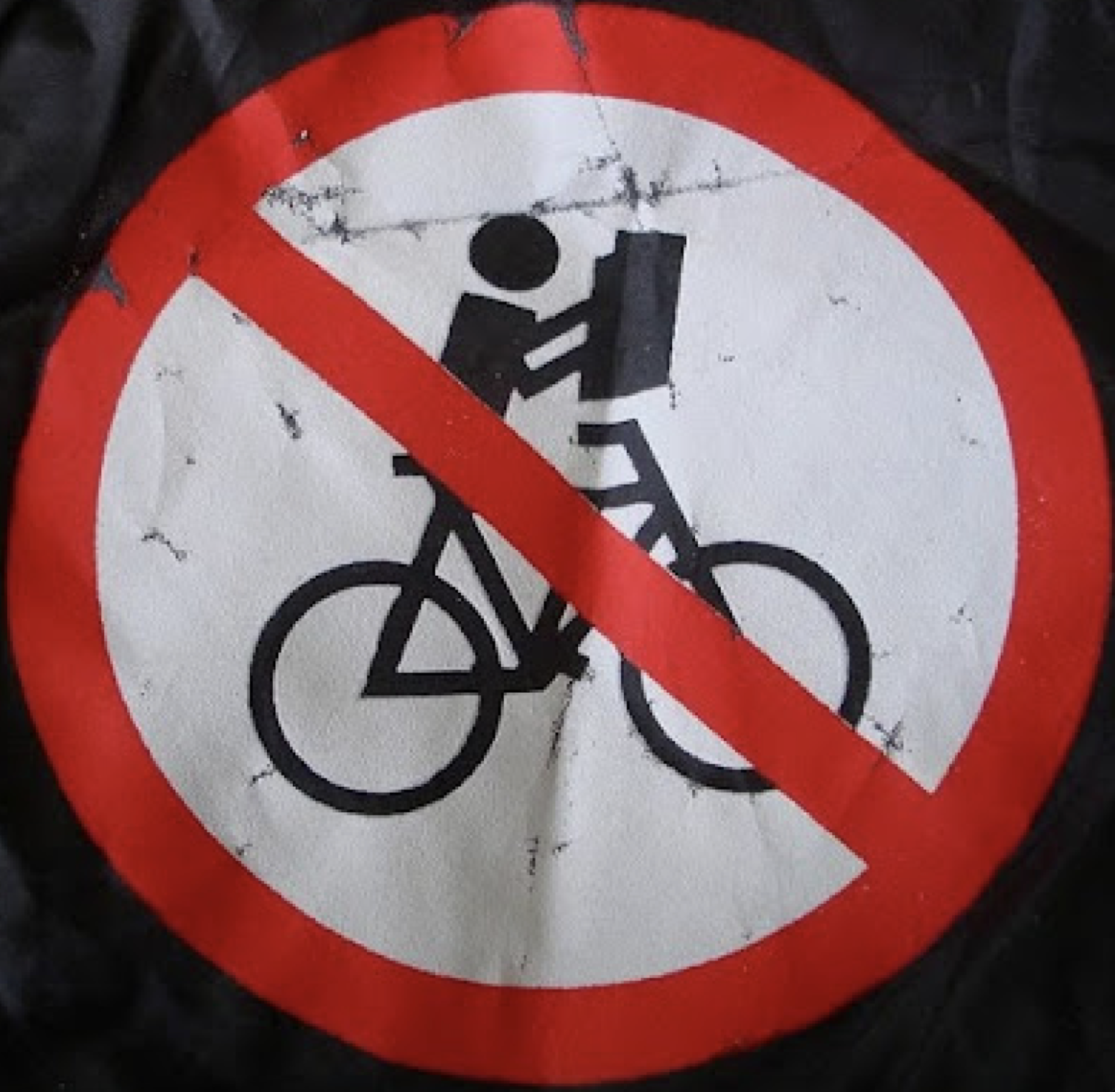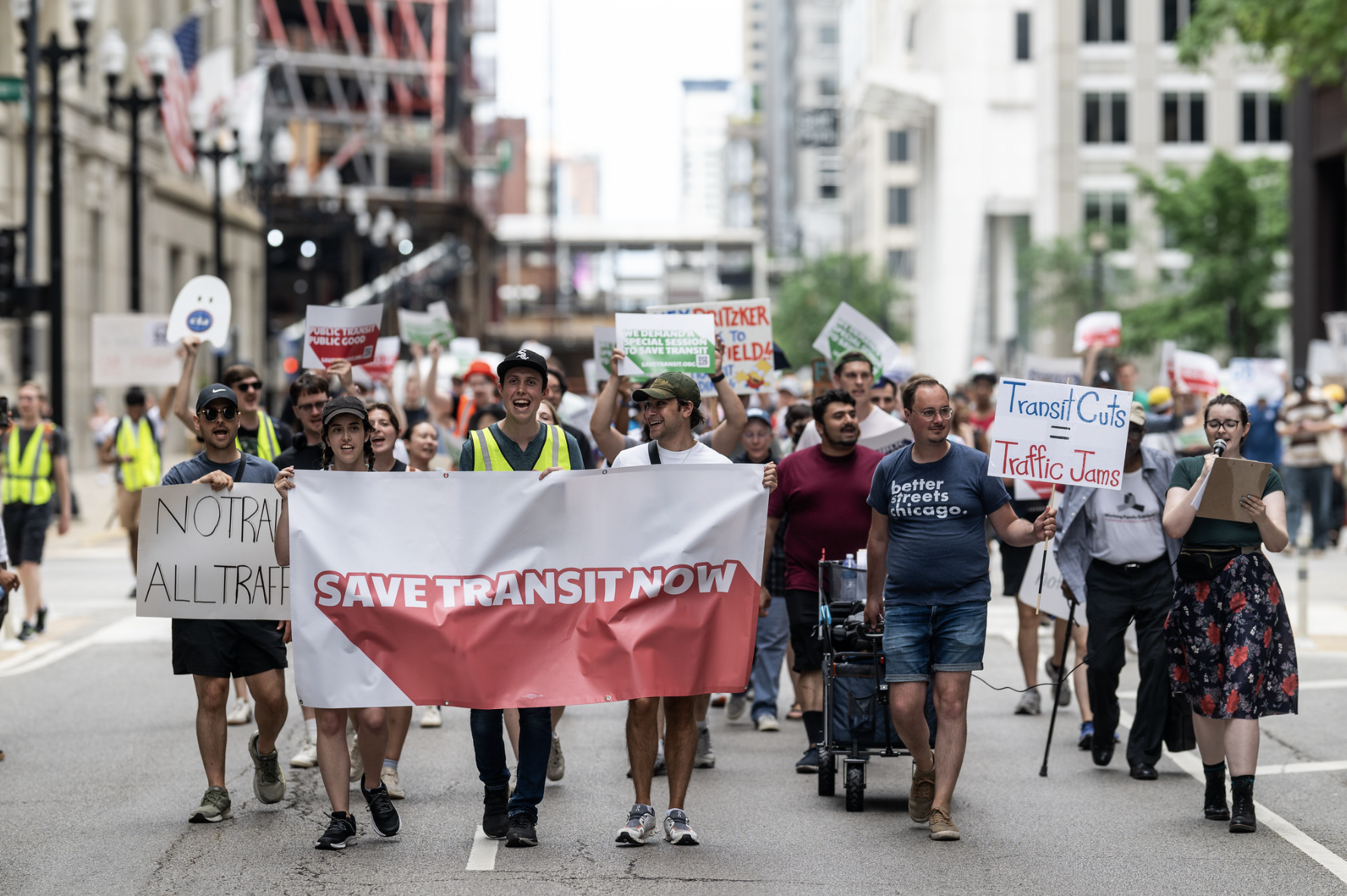Last June after bike courier Blaine Klingenberg, 29, was fatally struck by a double-decker tour bus driver at Oak and Michigan, a responding police officer wrote on the crash report that the victim “disregarded the light… causing the collision,” and most local media outlets ran with that narrative. However, witnesses later told me that the driver was at least partly to blame for the tragedy because she entered the intersection after her light turned red.
Thankfully, a bike crash that occurred last Friday at Adams and Canal only resulted in relatively minor injuries, but the way the incident was handled by the police parallels the unfair rush to judgment in the Klingenberg case. As computer programmer Lance Cooper was biking north on Canal, a cabbie driving westbound from the Adams bridge (which recently reopened to traffic after 13 months of construction) drove into the intersection.
Construction fences and barriers for a work site at the southeast corner of the intersection may have contributed to the collision by making it harder for the driver and cyclist to see each other. Cooper struck the side of the taxi and fell to the ground, suffering a broken bone in his hand and road rash on his back.
The collision was inadvertently captured on film by a CBS news crew that was reporting on the reopening of the bridge. “[Cooper] initially thought the cabbie ran a red,” said a reporter in a CBS news segment about the crash that ran that evening. “We showed him our video.”
In the segment, after viewing the crash footage, Cooper acknowledged that it “looks like I must have [ran my red]." He apparently came to this conclusion because the video shows he rode north into the intersection while north-south pedestrian traffic still had a Don’t Walk signal.
Police ticketed Cooper for running a red. The taxi driver wasn’t cited for a moving violation, but he did receive a ticket because – shockingly – he was operating a cab without a valid driver’s license. Still, in effect the police assumed that the crash occurred solely because the cyclist disobeyed his signal.
However, on Saturday bike-focused attorney Michael Keating (a Streetsblog Chicago sponsor), whom Cooper has retained to represent him in the case, ran a blog post noting that if you look closely in the video, you can see that just before the crash, the north-south pedestrian signal changed to a Walk signal. Keating stated that this shows the cyclist had a green light just before the collision. “The video correspondingly demonstrates that at the moment of impact the westbound cab driver had a red light at Canal Street,” the lawyer added.
Streetsblog’s Steven Vance stopped by to check out the signal timing at the intersection and found that Keating’s assertions are correct. This intersection does not have “leading pedestrian interval” signal timing, which give people on foot a head start before drivers and cyclists going the same direction get a green. Therefore, the fact that the north-south Walk signal was activated just prior to the collision means Cooper also had a green at that time.
Moreover, as the above video Steven shot illustrates, westbound traffic on Adams has a red for a full second before the Walk signals and green light on Canal are activated. That indicates that the cabbie may have entered the intersection after his signal turned red, during the “all-red” phase.
I don’t recommend that cyclists ride into an intersection just before their light turns green when cross traffic is present. This is not the same thing as an “Idaho stop,” stopping at a red light, checking for cross traffic, and proceeding if the coast is clear. Cooper’s crash illustrates why: Even if you know that cross traffic just got a stoplight, you can’t assume those drivers aren’t going to speed through the intersection after their light turns red.
However, it appears that the taxi driver may have also blown a red light and deserved to be ticketed. As with the Klingenberg case, it was wrong for the police to assume that the cyclist was the only one who committed a moving violation and was therefore solely to blame for the crash.
Moreover, cars travel about three times as fast and weigh roughly 100 times as much as bicycles, and they have blind spots. That's why it’s exponentially more dangerous when drivers don’t follow the letter of the law. As such motorists should be held to a higher standard of responsibility.
For that reason, along with the fact that the taxi driver was defying the law by operating without a license, Cooper may have a valid case that he deserves to be compensated for his injuries by the cabbie and/or his company.
Update 3/1/17 8:00 AM: An earlier version of this article, based on my observations of the edited video of the crash used at the beginning of the CBS news segment, stated that "it’s clear that the taxi driver did in fact blow a solid red light." After this post was published, a reader alerted me to the existence of a longer clip of the crash video that CBS shared on Twitter, which shows the lead-up to the collision. After viewing the full footage, I now believe it's not certain that the taxi driver ran a stoplight, although he may have crossed the stop bar just after his signal turned red. I've edited the article accordingly.





